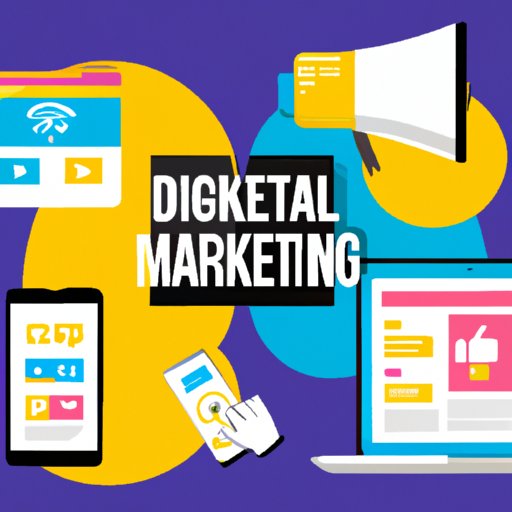Introduction
Digital marketing is a form of advertising that uses the internet and other digital platforms to promote products and services. It allows businesses to reach larger audiences in more cost-effective and targeted ways than traditional marketing methods. There are many benefits to using digital marketing, including increased brand awareness, improved customer engagement, and higher ROI. With the right approach, any business can start their digital marketing journey and see great results.
Develop a Digital Marketing Strategy
Before diving into digital marketing, it is important to develop a strategy. This will help ensure that all efforts are focused on achieving specific goals and objectives. Start by understanding your target market. Who are your ideal customers? What are their needs and wants? By understanding your target market, you can create campaigns that appeal to them.
Next, define your goals and objectives. What do you want to achieve with digital marketing? Do you want to increase brand awareness or drive more sales? Once you have identified your goals, you can begin to develop a plan of action. This should include tactics such as content creation, social media promotion, email campaigns, and more.
Conduct Market Research
Market research is an essential part of any digital marketing strategy. It helps you identify industry trends, analyze competition, and gather customer feedback. Start by researching industry trends. What topics are popular? What channels are most effective? By understanding the current landscape, you can create campaigns that resonate with your target audience.
It is also important to analyze your competition. How are they reaching their target market? What strategies are they using? Gather as much information as possible to gain insights into what works and what doesn’t. Finally, use customer feedback to refine your strategies. Ask customers for their opinions on your products and services. This will help you understand how to better serve them.
Establish Your Brand Identity
Once you have conducted market research, it is time to establish your brand identity. Begin by defining your brand values. What sets you apart from the competition? What do you stand for? Use this information to create a unique logo and website that reflects your brand.
Content creation is also essential for establishing your brand identity. Create content that appeals to your target market and establishes your authority in the industry. This can include blog posts, white papers, videos, and more.
Build an Online Presence
Social media is one of the most powerful tools for building an online presence. Platforms such as Facebook, Instagram, and Twitter allow you to reach large audiences and engage with them. Use social media to promote your products and services, share content, and build relationships with customers.
Email campaigns are also effective for building an online presence. Develop an email list of customers and prospects and send them regular updates about your business. You can also leverage partnerships with other businesses to expand your reach.
Optimize Your Website
A well-designed website is key to success in digital marketing. Improve the design and navigation of your site to make it easier for customers to find what they are looking for. Enhance search engine optimization (SEO) to increase visibility in search results. Incorporate videos and multimedia to engage visitors and keep them on your site longer.
Utilize Digital Advertising Platforms
Digital advertising platforms, such as Google Ads and Facebook Ads, offer numerous opportunities to reach your target audience. Use pay-per-click (PPC) advertising to drive traffic to your website. Take advantage of display ads to promote your products and services. Explore retargeting and remarketing to engage with customers who have already visited your site.
Conclusion
Digital marketing offers numerous opportunities for businesses to reach larger audiences and engage with them. To get started, develop a digital marketing strategy that includes understanding your target market, identifying goals and objectives, and conducting market research. Establish your brand identity, build an online presence, optimize your website, and utilize digital advertising platforms.
(Note: Is this article not meeting your expectations? Do you have knowledge or insights to share? Unlock new opportunities and expand your reach by joining our authors team. Click Registration to join us and share your expertise with our readers.)
